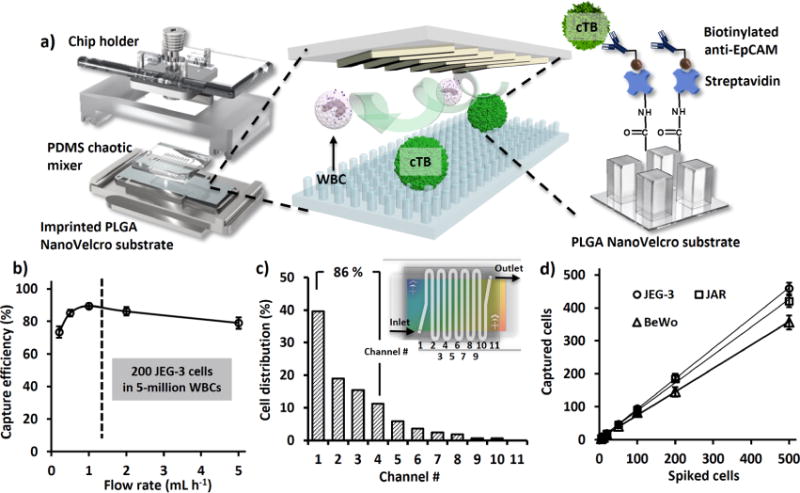Figure 2.

(a) A nanoVelcro microchip is assembled using a chip holder to hold together a chaotic mixer on top of an imprinted PLGA nanoVelcro substrate. The PLGA nanoVelcro substrate will be functionalized with capture agent (i.e., anti-EpCAM) for affinity capture of cTBs. (b) In the presence of anti-EpCAM, artificial cTB samples (200 JEG-3 cells in 5 million WBCs) were used to test the device performances at flow rates of 0.2, 0.5, 1.0, 2.0, and 5.0 mL h−1. (c) Spatial distribution of nanosubstrate-immobilized cTBs along the serpentine microchannel. 85% of cTBs were captured in the first 4 microchannels (8 cm). (d) Under the optimal flow rate of 1.0 mL h−1, the cTB-capture efficiencies were determine at different cTB numbers ranging from 5 to 500 cells mL−1. Here three trophoblast cell lines (JEG-3, JAR, and BeWo) were used.
